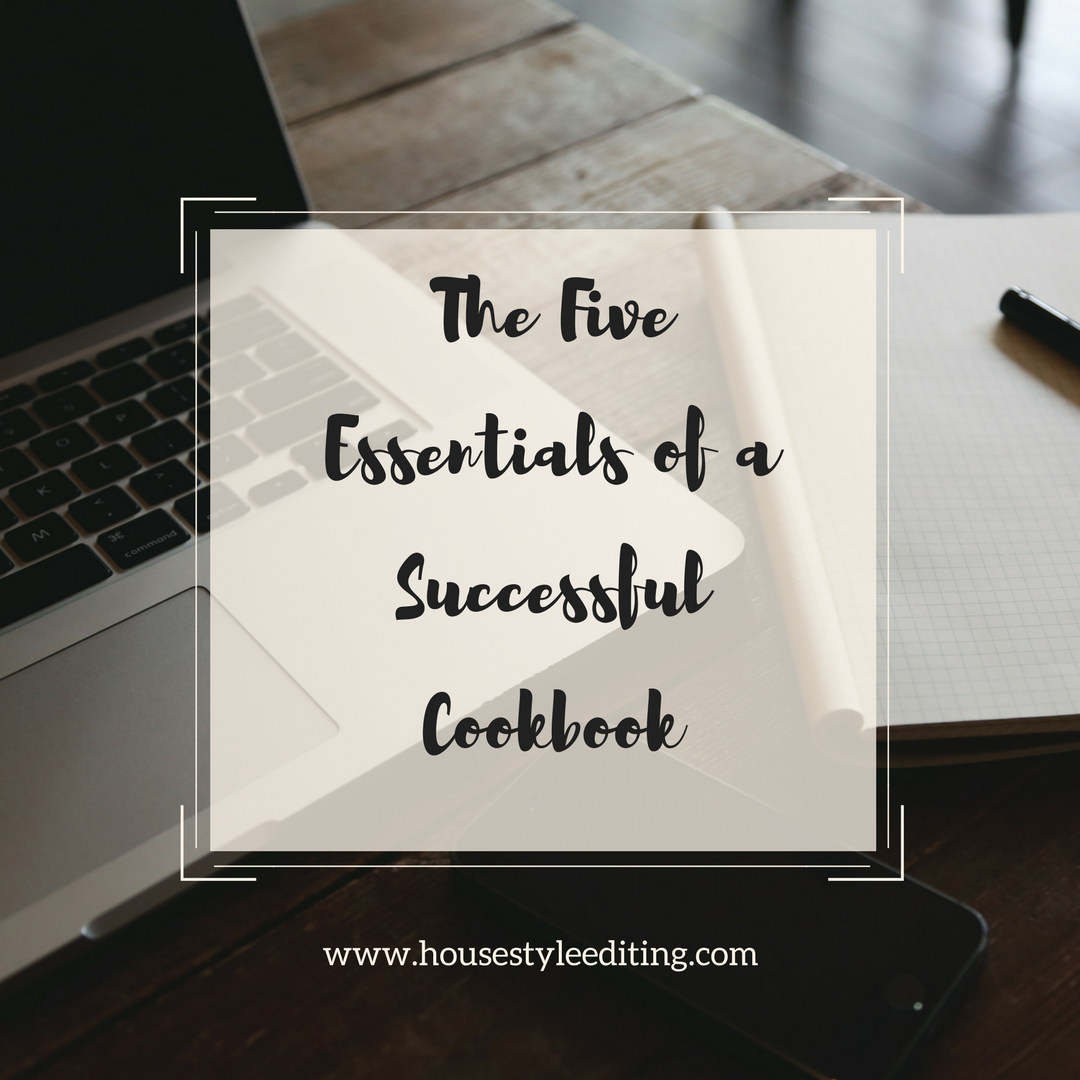The 5 Essentials of a Successful Cookbook

{This post contains affiliate links.}
I love to cook, and I love collecting cookbooks. I have over 50 cookbooks plus every issue of Food and Wine magazine from the last ten years. Yeah, I love all things food, recipes, pictures of food, food festivals, food trucks; I even competed on Master Chef and got all the way to L.A. auditions! You get the picture. Food is a thing for me; we are in a committed relationship. So, what does my food obsession have to do with editing? I was determined to bring my two loves—editing and food—together, mainly so that I have an excuse to eat and call it work.
When we think about cookbooks, we think about the beautiful photography and the easy-to-follow recipes, right? The other component that people forget is that Cookbooks have to be edited, just like any other book. I have had the privilege of editing many cookbooks, from family cookbooks to a celebrity cookbook benefiting Alex’s Lemonade Stand Foundation, and what I have found is that there are five essential components to a properly written cookbook. A cookbook with the proper editing can help ensure that it is ready for success!
Cookbook Editing Essential #1: Common Measurements
For cookbooks that are aimed for wider international distribution, using common measurements is essential. The U.S. market holds a large share of cookbook sales, and that must be taken into account when determining your target market. In recipes, quantities of ingredients can be measured by mass, volume, or count. The U.S. and Australia use measurement by volume almost exclusively (cups, teaspoons, tablespoons, etc.). The rest of the world measures by weight (grams, kilograms, milliliters, etc.). What’s most important is to determine your target market and use those common measurements in your recipes. And, if at all possible, include a conversion chart to satisfy all cooks.
Cookbook Editing Essential #2: Use Common Ingredients
One of the frustrations when following a recipe is encountering an ingredient that is difficult to find locally and easily. When a cook has to order the ingredient online and wait for delivery, it is less likely they will make the recipe, or worse, even purchase your cookbook. There are specialty cuisines that require unique spices and ingredients and cannot be substituted, and for those, cooks purchasing an Indian cookbook, for example, are aware that it is a specialty cuisine and are most likely prepared to invest time and money to bring the recipes to life. However, if the cuisine is more common, it will be important to incorporate commonly used ingredients and possible substitutions. Adding an index of ingredients and substitutions will be helpful.
Cookbook Editing Essential #3: Avoid Excessive References
Many times, recipes build upon each other—Protein with a Cream Sauce and Vegetables. Some cookbooks will present the protein recipe and within the recipe, refer to other pages for the sauce and vegetable recipes. This practice can be frustrating for the cook who has the cookbook laying on a counter covered with ingredients and utensils, and trying to flip through multiple page references to put dinner together. When working through the organization of your cookbook, consider how you will lay out the sections and if you have multiple recipes that build on each other. Excessive references could detract from your sales, and from purchase satisfaction.
Cookbook Editing Essential #4: Clear Instructions
Duh, right? The foundation of a cookbook is its recipes, and clearly written ingredient quantities and instructions are paramount for a good cookbook. The best way to ensure recipe clarity is to do recipe testing. A lot of it. Ask your friends, family, and beta readers to also test your recipes. As an expert home cook, or professionally trained chef, who is writing recipes that are familiar to you, you will have blind spots and take steps for granted. Other testers will not share those blind spots and will point out steps that lack clarity. You will want to target recipe testing every recipe by another cook, ideally in your target market. To accomplish that task, select a group of testers and assign several recipes each. You can also provide forms to your testers so that you can capture consistent feedback that will make it easier for you to read, evaluate, and incorporate.
Cookbook Editing Essential #5: Show Don’t Tell
This is a practice used in all types of writing—and a cookbook is no exception. It is a technique that helps readers experience the words you write through action, senses, feelings, and thoughts. In your cookbook, excellent photography of each completed recipe will help towards this goal. But, in your instructions, you have the opportunity to describe what the home cook should be seeing, smelling and tasting each step of the way.
Writing and publishing a cookbook is time-consuming and expensive; you don’t want to make avoidable mistakes that can and likely will negatively impact its success rendering your personal and financial investment moot. An editor can help you avoid common mistakes and ensure that your cookbook is set up for success. I am that editor, and I can help you! You can set up a call with me at www.housestyleediting.com to discuss your cookbook.


Leave a Reply